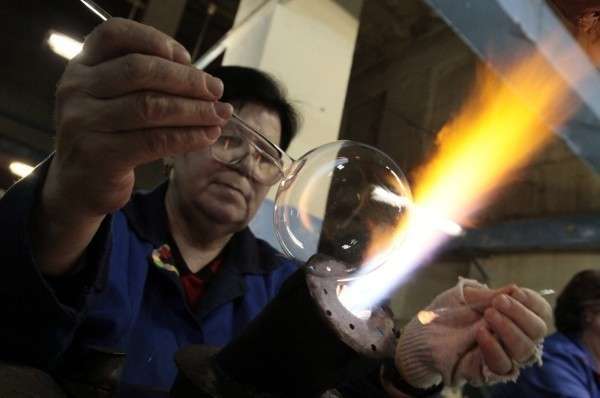How glass is made, or a Millennium process
Making glass began in ancient times – almost two and a half thousand years ago. Initially, it was a very responsible and rather complicated process, and therefore glass products were very expensive. Now the production of glass has been simplified thanks to the new technologies used, but nevertheless, glass products are still hardly a cheap material.
Glass making process
To understand how glass is made, you need to familiarize yourself with the stages of its production:
- All the necessary materials (sand, soda and lime) are loaded into the furnace, which are heated to a very high temperature – over 1400 degrees Celsius. In this case, the raw material melts, forming a viscous substance.
- Further, the resulting mass enters the tin bath, where it is given the necessary shape. In this case, the heating temperature drops by several hundred degrees.
- In the future, the glass goes through a cooling stage, at which additional processing is carried out (applying an additional coating, engraving).
- The glass is cut into the required pieces and sent to the packaging stage, where the glass is packed and sent to the warehouse.
Now the glass is ready, and you can send it to the points of sale.
Technology of making glass from sand
To find out how glass is made from sand, you need to decide what is generally needed for this process. For the production of glass, quartz sand is used – the purer, the better. It is this element that is the basis that determines the future parameters – light transmittance and strength.
Depending on the purpose of production, impurities are added to quartz sand, which determine its characteristics. For example, to create crystal instruments, you will need to use additives containing lead. Impurities can either strengthen the glass structure or weaken it, so very accurate weighing is essential when selecting materials for the manufacturing process. After it, the materials are melted and go through the cycle described above. It is worth adding that glass can have different degrees of processing, which depend on the purpose of operation.
Industries where glass is made use special stationary installations. The process must be carried out continuously, otherwise the materials in the installation will solidify and a new furnace will have to be built. Often, the period of operation of one furnace is up to 15 years, and therefore it is necessary to establish a good market for products. Otherwise, sooner or later, the warehouses will be filled with finished products.
Colored glass and dyes
Another equally interesting question may be – how to make multi-colored glass? There are several ways to color glass, but the main one is the addition of dyes at the stage of melting materials and the formation of a liquid glass mass. For coloring, oxides of various metals are used – chromium, copper, iron, vanadium, cadmium, iron, manganese and many others. When adding dyes at the initial stage, it is necessary to strictly observe the temperature regime, because each of the dyes requires a specific temperature. Otherwise, evaporation of the elements or crystallization of the glass mass is possible.
From all that has been said, it follows that the creation of glass is a really delicate and complex process that requires many factors to be taken into account, the failure to comply with which can lead to failure and loss of funds.


